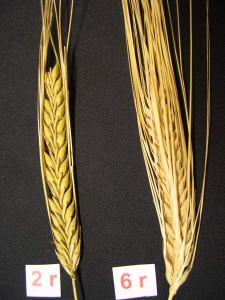The plant and animal genome conference is held every January in San Diego California. This will be my first year attending and I wanted to get a sense of where the researchers I’ll be listening to and mingling with are coming from.
- The USDA (145 attendees)
- Iowa State University (45 attendees)
- *Cornell University (37 attendees)
- (3) *University of California – Davis (37 attendees)
- University of Minnesota (25 attendees)
- *University of Georgia (22 attendees)
- (6) *Washington State University (22 attendees)
- University of Illinois (21 attendees)
- University of Florida (19 attendees)
- Texas A&M (17 attendees)
- *North Carolina State University (15 attendees)
- (11) *North Dakota State University (15 attendees)
- (11) *Pennsylvania State University (15 attendees)
- 14th is also a three-way tie between Clemson, Kansas and Oregon State (all with 14 attendees)
All attendee numbers are based on hastily written regular expressions and people can find a whole bunch of different ways to write the name of the same university, so these numbers should be take, at best, as minimum estimates.
Huazhong Agricultural University deserves some special recognition as the highest ranked organization based outside of the US, sending at least 13 researchers to PAG.
Last spring I did a similar calculation for this year’s maize genetics conference. Three institutions overlap between the two lists: Iowa State (ranked #5 at the maize meetings), Cornell (ranked #1), and the University of Florida (ranked #7)



